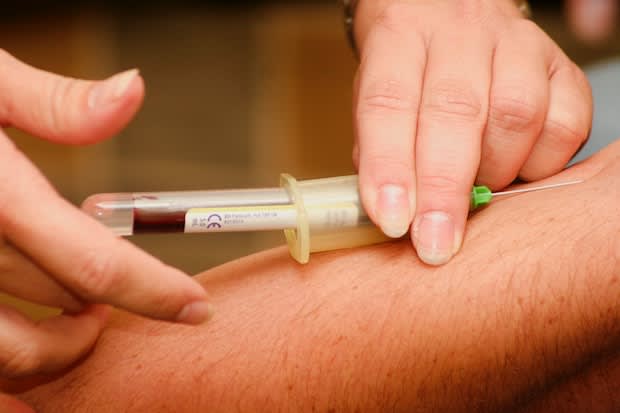Table of Contents
III. Symptoms of High Cholesterol
IV. Risk Factors for High Cholesterol
V. Diagnosing High Cholesterol
What is Cholesterol?
Cholesterol is a substance that resides within the human body. This waxy substance is used to form cells, vitamins, and hormones in the body. Cholesterol is made in the liver and essential to bodily processes, but too much cholesterol can be bad. Eating foods like meat, poultry, and dairy products that are high in cholesterol can introduce excessive amounts of cholesterol into the body.
These particular foods affect the body because of saturated and trans fats within them. These fats trigger the liver to make more cholesterol and cause cholesterol levels to tip over to an unhealthy level. High cholesterol levels circulating in your bloodstream can contribute to cardiovascular issues, heart disease, and stroke. Many people are unaware of their cholesterol levels, but it is essential to check at your yearly doctor’s appointment if you are at risk. Your doctor must be aware of your high cholesterol so they can come up with a treatment plan to prevent the development of dangerous health conditions. You may be prescribed medications like Lipitor (atorvastatin) and Zetia (ezetimibe). Read on to learn more about risk factors and treatment for high cholesterol. [1] Two types of cholesterol circulate the body and attach to various proteins. When proteins and cholesterol combine, it is referred to as a lipoprotein. Good and bad cholesterol is determined based on what the lipoprotein carries. Low-density lipoprotein (LDL): LDL is often referred to as “bad” cholesterol because it builds up in the arteries. Once too much of this cholesterol builds up on the arterial walls, arteries harden and narrow. This makes it more difficult for blood and other substances to move throughout the body and can lead to many cardiovascular issues. High-density lipoprotein (HDL): LDL transports cholesterol particles throughout the body, whereas HDL collects excess cholesterol and takes it back to the liver. [2] Similar to high blood pressure, high cholesterol does not come with any symptoms. A blood test is the only way to detect high cholesterol. Typically, doctors will not perform a cholesterol test regularly unless you have risk factors for high cholesterol or a family history of the condition. If you do not have any risk factors for heart disease, a cholesterol test will only be performed every five years. If you smoke, have diabetes, or high blood pressure, you will be tested more frequently. [2] The majority of the risk factors for LDL are often related to a person’s lifestyle choices. As mentioned earlier, certain foods can increase your cholesterol. Other risk factors can include: Lack of exercise and obesity: If you do not exercise regularly, bad cholesterol particles may increase in size and clog up your arteries. When you do exercise, good cholesterol levels are boosted. If your body mass index (BMI) is greater than 30, you risk high cholesterol. Smoking: The walls of the blood vessels can become damaged if you smoke cigarettes regularly. Damaged blood vessels make it more likely for fatty deposits to accumulate. Diabetes: Having uncontrolled high blood sugar can significantly increase your risk of high cholesterol. High blood sugar also damages the arterial lining, further increasing the chance of fatty deposit build-up. Age: High cholesterol is more common in older people. As you age, the risk of high cholesterol increases and the liver becomes less able to remove the bloodstream's bad cholesterol. [2] If your doctor determines that you are at risk for high cholesterol, they will order the test at your next doctor’s appointment. This test is referred to as a lipid panel and reports total cholesterol, LDL cholesterol, HDL cholesterol, and triglycerides (a fat in the blood). Your doctor will ask you not to eat or drink anything around 12 hours before taking this blood sample. Your cholesterol levels are measured in milligrams (mg) of cholesterol per deciliter (dL) of blood. Countries worldwide determine different "desirable" levels of cholesterol, but the United States considers a level below 200 mg/dL a healthy cholesterol level. A reading of 200-239 mg/dL is borderline high, and 240 mg/dL and above is high cholesterol. [3] Treating high cholesterol often involves a multi-faceted plan. Lifestyle changes are typically the first line of treatment, and your doctor may recommend a healthy diet to lower your LDL levels. You may want to lose extra pounds, exercise regularly, and refrain from smoking. If you have severely high cholesterol levels, you may be prescribed medications like Lipitor (atorvastatin) and Zetia (ezetimibe) to lower cholesterol. Lipitor is a statin drug that blocks the substance your liver needs to make cholesterol. Zetia (ezetimibe) is a cholesterol absorption inhibitor that reduces blood cholesterol by limiting dietary cholesterol absorption. Doctors may prescribe it alongside statin drugs. There are several different cholesterol treatments and medications, and your doctor will determine the best plan for you. [3] The content in this article is intended for informational purposes only. This website does not provide medical advice. In all circumstances, you should always seek the advice of your physician and/or other qualified health professionals(s) for drug, medical condition, or treatment advice. The content provided on this website is not a substitute for professional medical advice, diagnosis, or treatment.
Good and Bad Cholesterol
Symptoms of High Cholesterol

Risk Factors for High Cholesterol
Diagnosing High Cholesterol

General Treatment
